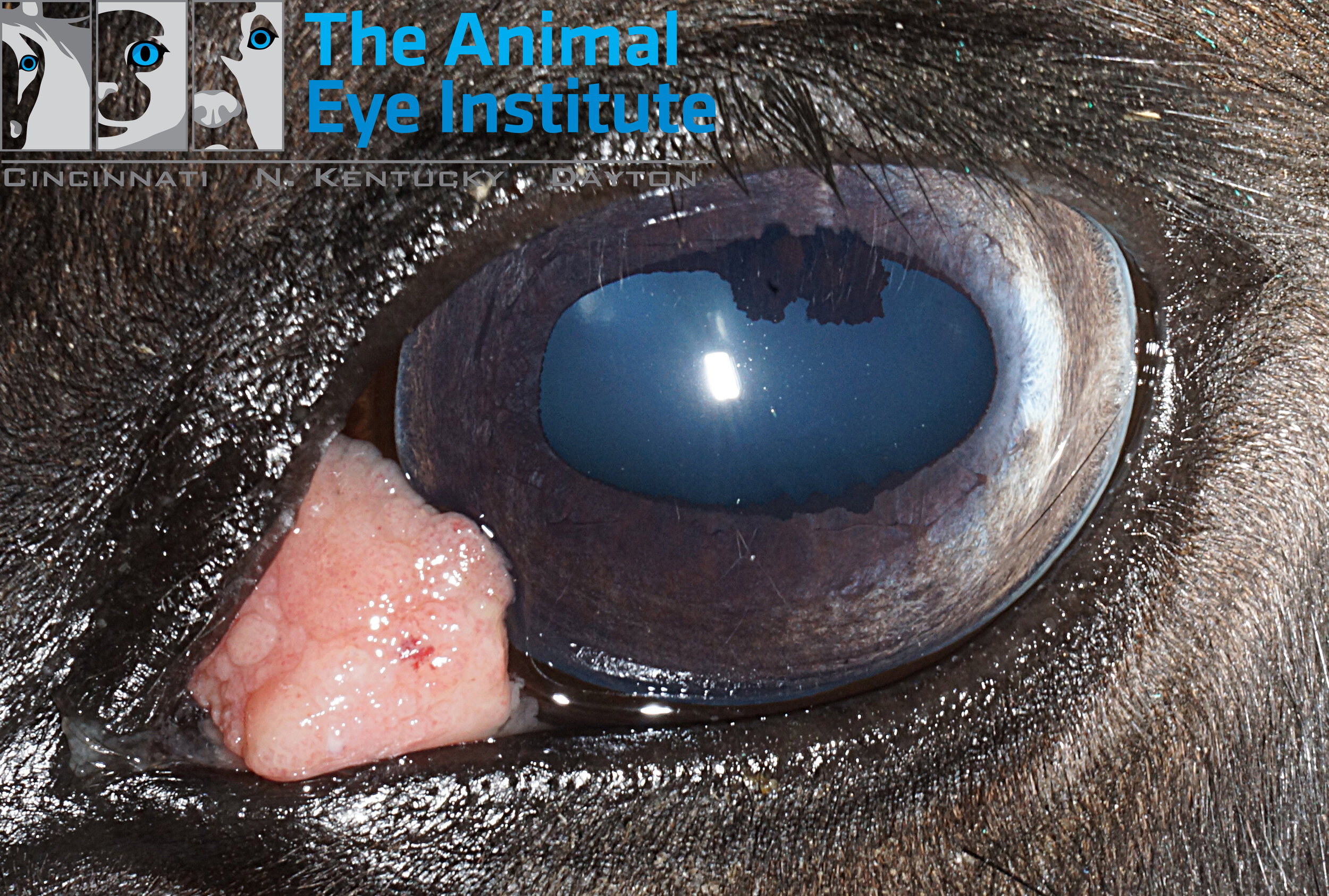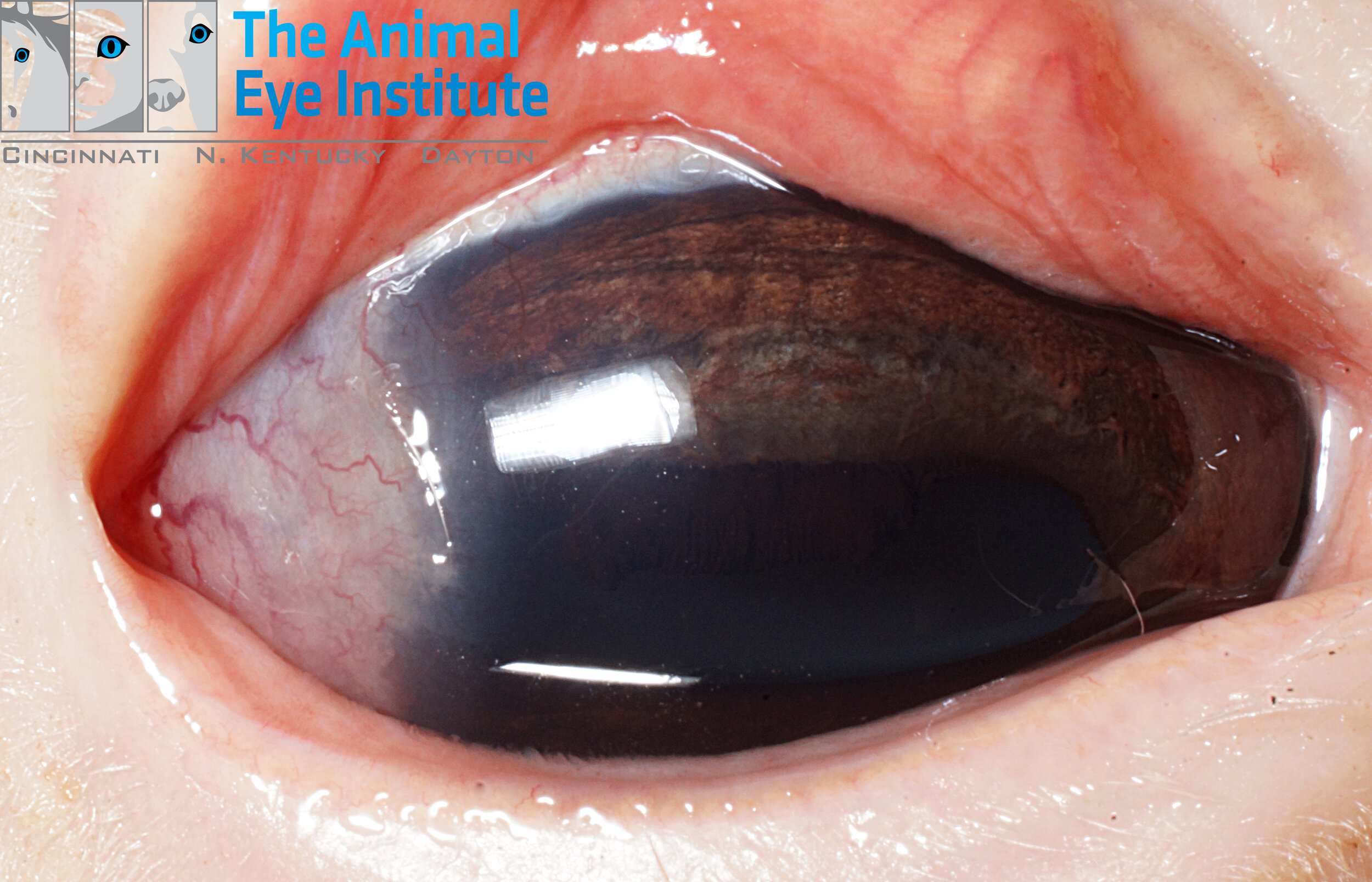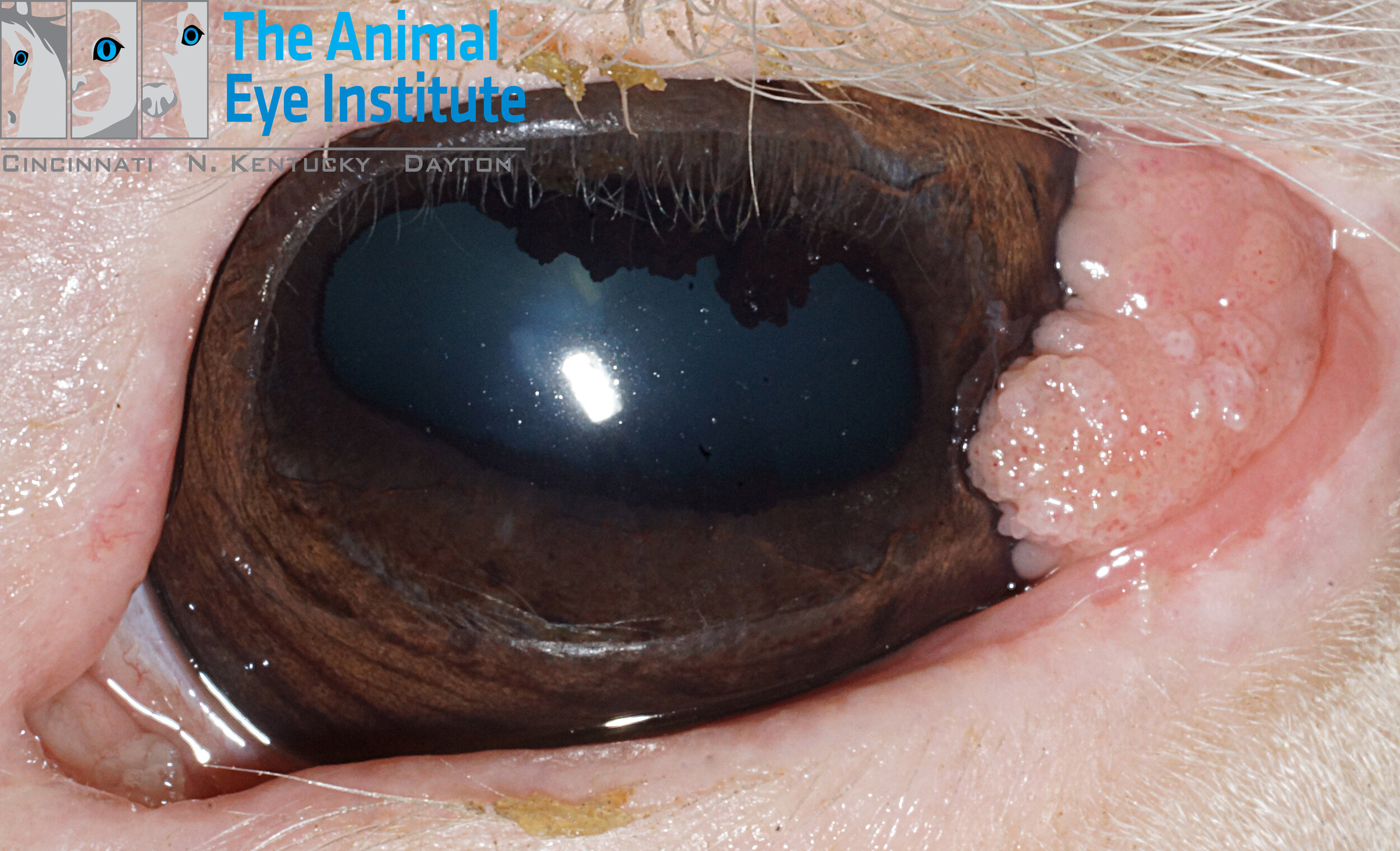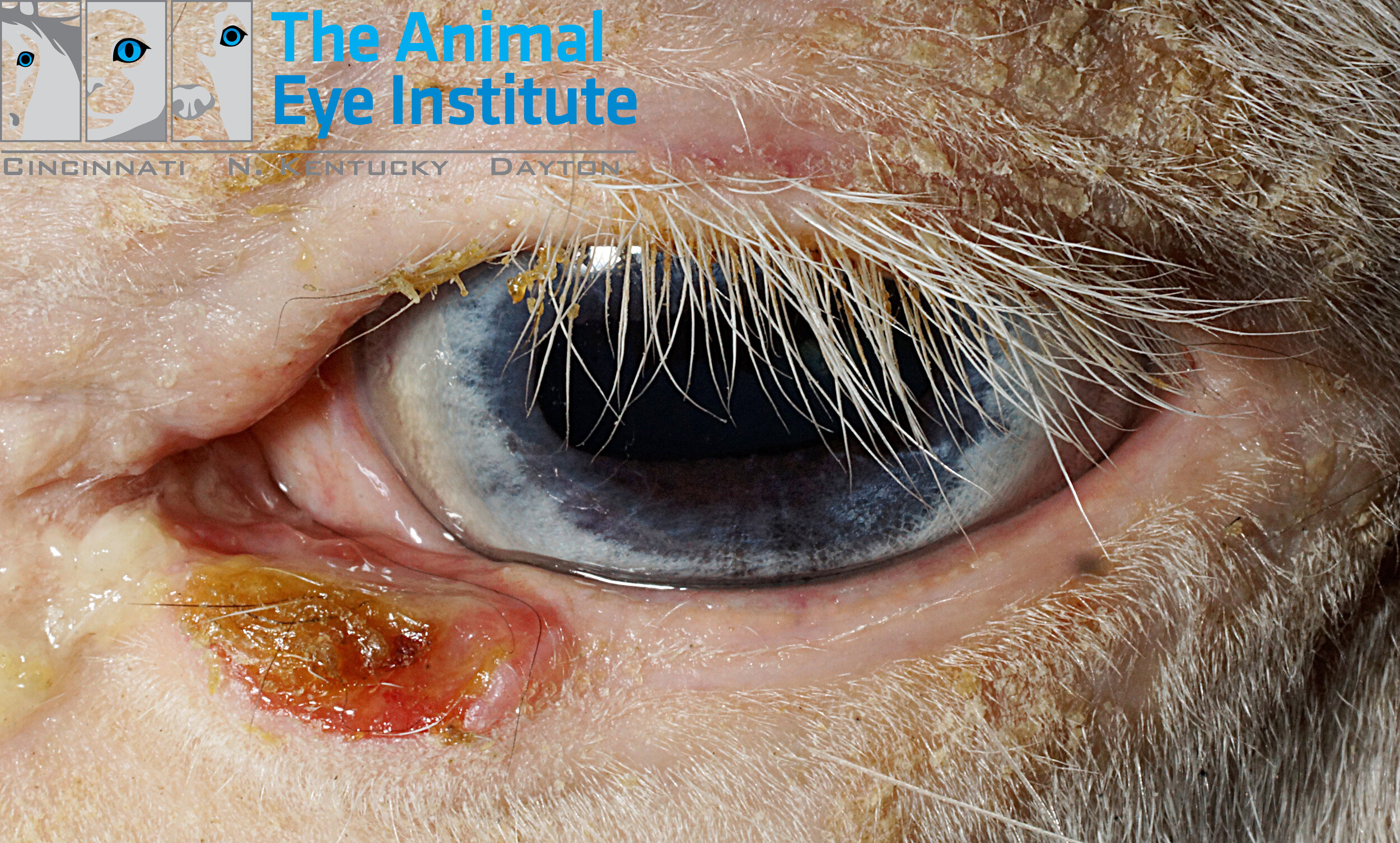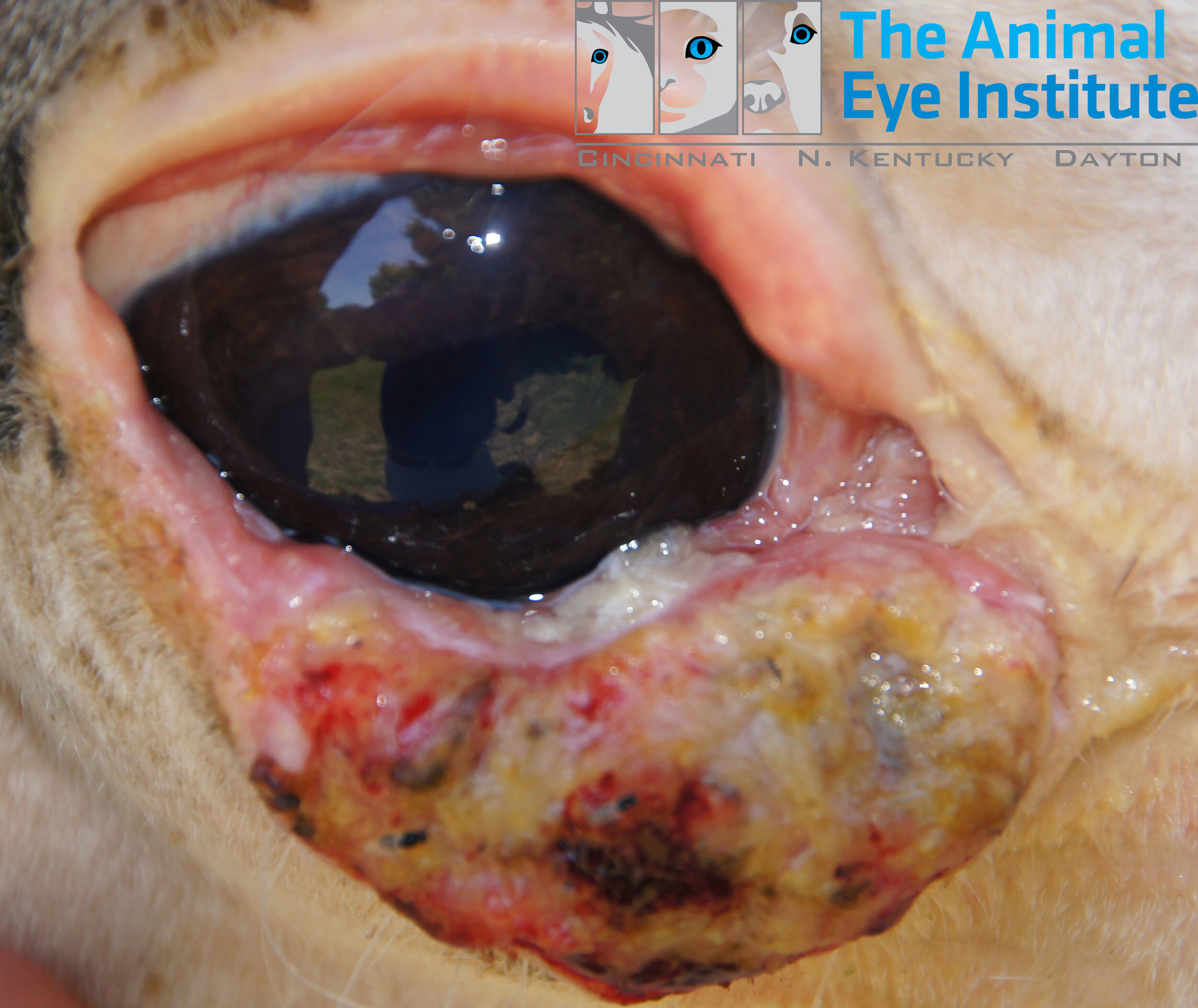Squamous Cell Carcinoma in the Horse
What is squamous cell carcinoma?
Squamous cell carcinoma (SCC) is the most common tumor of the equine eye. It can occur on the cornea, eyelids, third eyelid, and conjunctiva. Horses with lack of pigmentation of the eyelids or around the eye are at increased risk for the development of SCC. The at-risk breeds include Appaloosas, Quarter horses, and Paints. Other breeds, such as Thoroughbreds, Haflingers, and draft horses (Belgians, Shires, and Clydesdales) have an increased prevalence, even though they typically have adequate pigmentation around the eye. The mean age of horses affected is between 9 and 13 years of age with an increased occurrence in geldings. The pathogenesis of SCC is not completely understood, but UV light, gene mutations, viral infections, genetics, hormonal, and immune-mediated factors have been thought to contribute.
How do you diagnose SCC?
A tentative diagnosis of SCC is based on clinical appearance. SCC appears most commonly at the lateral limbus, the area of the cornea furthest from the nose where the white of the eye meets the cornea. It typically appears as a nodular, or cobblestone-like, raised, white to pink, fleshy mass. Definitive diagnosis is based on histopathology of a biopsy. Other differentials include corneal fibrosis, or scarring, and other types of cancerous or infiltrative processes.
What is the treatment for SCC?
Many different treatment options for SCC have been described and include but are not limited to surgical excision, cryotherapy, radiofrequency hyperthermia, radiation therapy, chemotherapy, and carbon dioxide laser ablation. Medical therapy has been described but alone is not an effective treatment for SCC. At The Animal Eye Institute, our treatment of choice is surgical excision followed by cryotherapy. After removal of the bulk of the mass, cryotherapy freezes and kills any remaining malignant cancer cells. These procedures are performed under general anesthesia, and complications associated with the procedure include mild post-operative discomfort and temporary focal corneal edema, or haziness.
What is the prognosis for SCC?
Early intervention is critical and curative in most cases of SCC. Superficial keratectomy combined with cryotherapy carries an approximately 70% success rate over a follow-up period of 4.5 years. There was a greater chance of recurrence when lesions had a surface area of greater than 2cm2, so the sooner the mass can be removed the better. SCC rarely metastasizes to distant areas of the body, but if the mass is not removed, it can cause local tissue invasion and lead to loss of the eye. Routine evaluation of your horse’s eyes is critical, and prompt referral to a veterinary ophthalmologist for any abnormalities is extremely important. After removal of a SCC, recheck exams with your veterinary ophthalmologist are critical to the long-term success of your horse.


